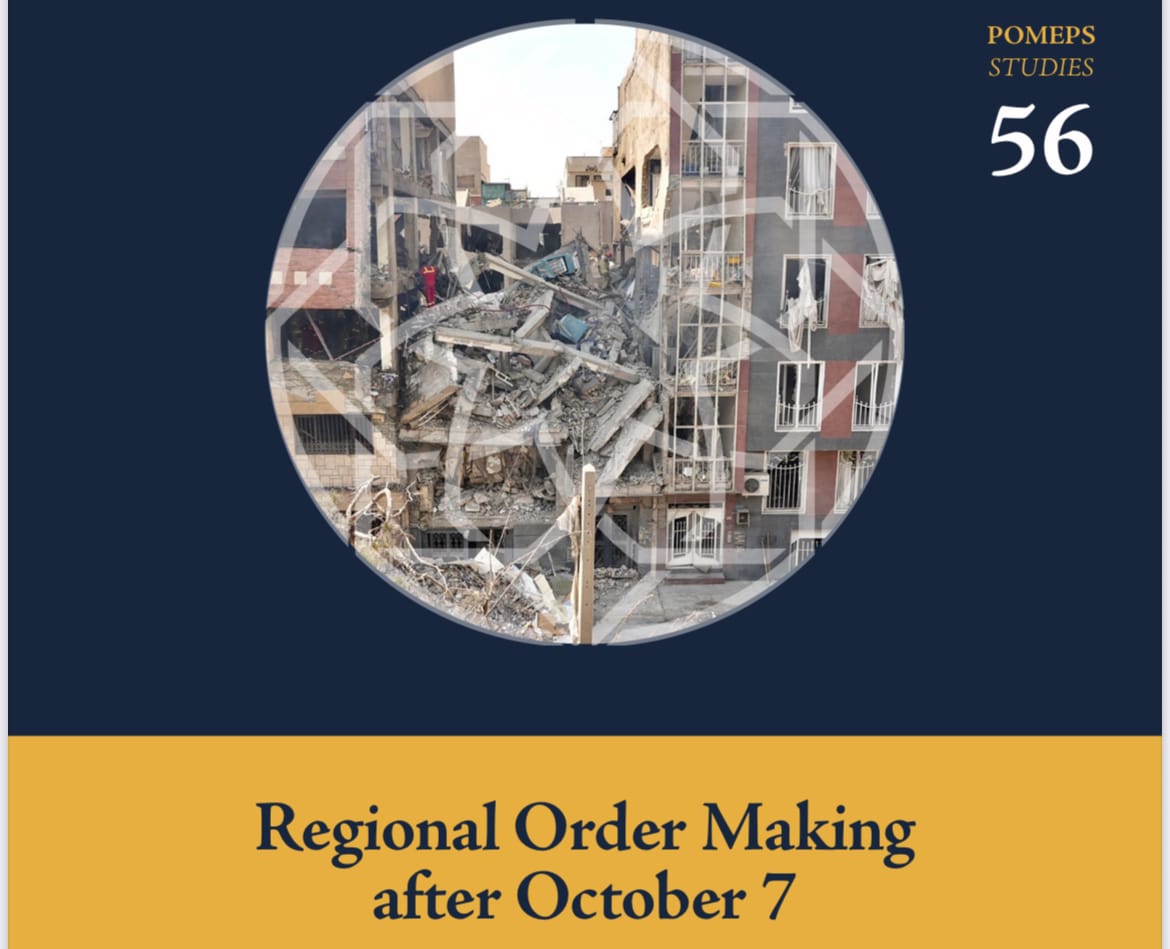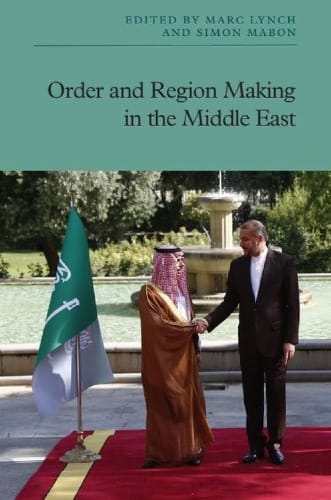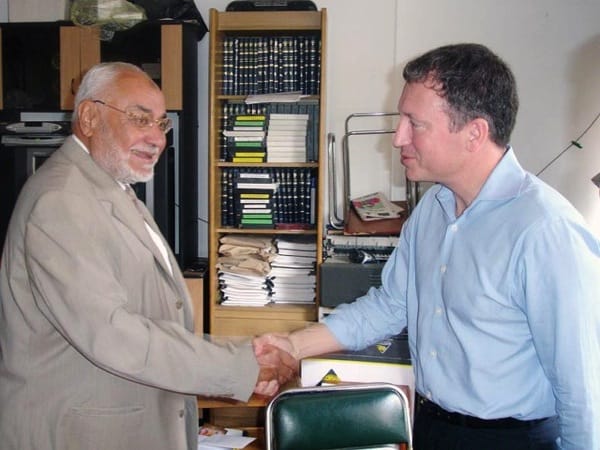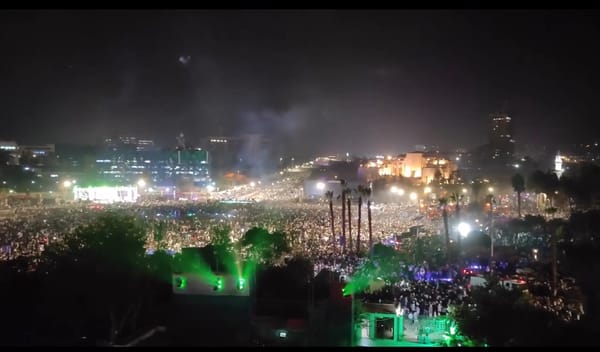Regional Order Making After October 7

A fascinating new collection of essays building on our recent book has never been more timely
Note: I've been sick the last few days and have fallen behind on posting. I'll be making up for that, I'm afraid. Keep an eye out very soon for another post on major recent developments both in the US and in the region, along with another roundup of MENA Academy publications.
This is an exciting, if disconcerting and often horrifying, time for those who study questions of regional order in the Middle East. Israel has been engaged in an intentional effort to rewrite the rules of regional order through its assertion of both the right and the ability to bomb its neighbors at will – from the decapitation and devastation of Hezbollah to the airstrikes and occupation of territory in Syria to the twelve days of war with Iran. The escalating destruction of Gaza's territory and people seems finally to have crossed a threshold forcing some international action and attention, while the Trump administration seems willing to entertain dramatic action to, in the president's chilling words, "finish the job." Meanwhile, Iran and its allies are contemplating whether and how to rebuild an acceptable regional posture, while Turkey seeks to build on its advances in Syria and the Gulf states for now continue to adhere to their rapprochement.
In that context, I'm excited to announce the publication of our new POMEPS collection, Regional Order Making after October 7, which builds on and extends our recently published Edinburgh University Press book Order and Region Making in the Middle East. I strongly recommend that book for your fall courses on the Middle East – it brings together one of the most theoretically diverse groups of scholars focused on Middle Eastern international relations you'll find anywhere, and I humbly believe that Mabon and my introductory essay is one of the fullest theoretical accounts of the question of regional order you'll find anywhere. Every chapter presents a unique approach to the issues of regional order from a distinctive and often unexpected direction, while remaining in a sustained dialogue with each other about key questions about international and regional orders.
POMEPS Studies 56 features selected authors from that volume and contributions from other scholars who attended a December workshop hosted by Raffaella A. Del Sarto at the European University Institute's Robert Schuman Center to discuss how October 7 and its aftermath appeared through the lens of our book. The full introduction, which I co-authored with Del Sarto and Mabon, appears below; the whole collection can be downloaded as an open access PDF here; and the book can be found here and also on JSTOR here (apologies about the price but let me know if anything looks interesting for your syllabi).

Regional Order Making after October 7
Raffaella A. Del Sarto, Marc Lynch and Simon Mabon
Since the Hamas attacks of October 7, Israel has sought to remake not only Gaza but the broader Middle Eastern order by force. It devastated Hezbollah, killing many of its senior leaders and largely removing the deterrent threat long posed by its missile arsenal; seized territory in Syria and bombed at will across the country following the fall of the Asad regime; launched (largely ineffectual) strikes against the Houthi regime in Yemen; and unleashed a large-scale twelve day bombing campaign against Iran which culminated in the United States bombing the Fordo nuclear complex and then imposing a ceasefire. Israeli policymakers and pundits are openly discussing the creation of a new Middle East defined by the military defeat of Iran and its allies and the removal of any red lines against its actions.
This Israeli project of reordering the Levant through unchecked air power is orthogonal to the regional order shaped and presided over by the US since 1991, however – simultaneously bringing it to its logical conclusion and upending its very foundations. Israel’s military supremacy rests on American support. Very real tensions have emerged between the US and its core allies: the US and Israel are at odds over whether Syria should be allowed to consolidate a new regime; the US and its Gulf allies are at odds over American support for Israel’s war on Gaza. Iran emerged from the twelve-day war bloodied but unbeaten; its rapprochement with the Gulf states continues to hold, and it remains uncertain whether and how Tehran might seek to rebuild its regional networks and restore deterrence against Israel – including potentially racing towards a nuclear bomb.
This moment of attempted order-making in real time is a good time, then, for the publication of our new Edinburgh University Press book Order and Region Making in the Middle East. Our book brought together some of the leading scholars of Middle Eastern international relations over a multi-year series of workshops to rigorously assess the nature of regional order across diverse theoretical perspectives. Much has changed in the short time between the production of the book and its publication. At the time of writing, the cover image of Order and Region Making in the Middle East highlighted the declining salience of American hegemony as manifested by the 2023 Chinese brokered rapprochement between Saudi Arabia and Iran. The primary competing ordering projects in the region at the time were the Abraham Accords model pushed by Israel, the UAE and the United States which featured Arab-Israeli normalization and cooperation against Iran without movement on the Palestinian issue, and the “Resistance Axis” model centered around Iran and its proxies. Today, in the wake of Israeli atrocities in Gaza the Abraham Accords model has faded from view – yet remains intact, with American hopes to expand it to include Saudi Arabia still enduring – while the “Resistance Axis” has been decimated by Israeli attacks on Hezbollah and Iran and the collapse of the Asad regime. What remains of regional order in its wake, and what might emerge from the turmoil?
In December 2024, we convened a workshop at the Robert Schuman Center of the European University Institute in partnership with POMEPS and SEPAD to discuss these regional changes and their meaning for our book. How did the October 7 attacks, the Gaza war, and Israel’s rapidly expanding military actions from Lebanon to Iran change the region? Were those changes in line with the book’s theoretical predictions? And what would our book have to say to the new aspirants hoping to remake regional order?
Order and Region Making
Before turning to those recent changes, it is worthwhile reviewing the various theoretical approaches to order which our book features. Conceptions of order, we argued, first rely on definitions of the region to be ordered – definitions which are themselves quite political and have evolved over time. This collection devotes less time than the book to that critical dimension of ordering, focusing more on the concept of order, but readers of the book will find ample discussion of the politics of the shifting boundaries of the region (especially, but not only, the growing interconnections between the Middle East and the Horn of Africa). Scholars and policy analysts mean very different things by “order”, and conflating those divergent meanings and their underlying theoretical assumptions can lead to disastrous results.
Approaches to order vary according to ontology, epistemology and, increasingly, geography. US approaches to order have typically adopted broadly Realist positions which range from the narrow, systemic approach, to the interplay of legitimacy and an underlying balance of power. Realists, both Classical and Neorealist, have focused on the distribution of power, though their specific focus varies, contingent upon factors including the number of great powers present, types of norms involved, forms of legitimacy, and alliances. In contrast, constructivist approaches and various European approaches have taken more post-positivist positions. The English School and Copenhagen School have gained considerable traction across European scholarship as the varied influence of continental philosophy takes hold, albeit often focusing on differing referent objects.
These theoretical approaches take very different positions on the importance of normative foundations for stable order. Realists view order as primarily a function of power and the willingness to deploy it in defense of allies and to deter adversaries. But most of the other approaches discussed above accept that an order can only truly be stable if it rests on some degree of legitimate authority and a common sense of normative purpose. One of the pathologies of American order in the Middle East is that many US officials and policy analysts seem to believe that their domination of the region rests on such a shared normative order, and to not understand how Gaza and broader support for Israel has stripped away such common purpose.
Trans-Atlantic divisions about order are not purely intellectual. In the aftermath of the US strikes on Iran earlier this month, US officials spoke of securing peace through force, while European leaders spoke of the need for de-escalation. While the complexities of bilateral relationships with the US made individual responses more complex, French President Emmanuel Macron was steadfast in his declaration that the US strikes were in breach of international law, highlighting the centrality of norms in global politics. And yet, at the same time, the need to retain strong links with the US meant that few European leaders diverged far from the Trump position. These machinations hint at the (impending) demise of the rules-based order that emerged from the ashes of the Second World War and instead point to a form of order predicated on force, on the notion that might is right.
By these definitions, has regional order changed in any fundamental way since the Hamas attacks on Israel of October 7, 2023? One of the book’s major contributions is to examine the question of change in international orders – a surprisingly difficult question to pin down, whether in the Middle East or more broadly. It is not a new question. Every major event in the Middle East – the Gulf War, the invasion of Iraq, the Arab uprisings, and more – has prompted observers to ask whether the regional order has changed radically and irreversibly, with the answer often being affirmative. However, not every development in the politics and international relations of the Middle East equals a substantial change of the regional order. The book chapter by Del Sarto, Malmvig, and Soler i Lecha therefore introduced an analytical distinction between what defines a change of order and what can be considered changes within a given regional order – even if the latter are important ones. Focusing on the main structuring principles across different levels of analysis, the analysis considered not only the distribution of material power but also shared norms and rules that foment common assumptions and expectations, the type of security relations, region-wide securitization dynamics, and the degree of violence across the region. These elements structure relations between the actors in a region and define the parameters of legitimate behaviour.
Following the Arab uprisings, for instance, several developments could have led to a change of the regional order. While the demise of authoritarianism and the break-up of states along ethnic and/or religious lines did not materialize, other changes were significant. These included the trend among regional actors to diversify their foreign relations and the growing distance to their traditional allies in ‘the West’. But perhaps even more importantly, the normalisation deals signed between Israel and several Arab states in 2020—the so-called Abraham Accords—could have led to Israel’s integration into a regional security architecture. Yet, several key features of the regional order remained unchanged after 2011. These comprise the overarching norms of sovereignty and territoriality, the main features of key actors in the system, the region’s multipolarity and the high extent of external meddling, and the high incidence of violence and wars. This led to the conclusion that while MENA’s regional order was going through a significant phase of transition, it had not (yet) been fundamentally transformed.
The book was mostly written before October 7. Much has happened since. Does the destruction of Gaza, the weakening of the “Resistance Axis,” and Israel’s attempt to define a new order by airpower and military means without norms amount to a change of the system? Whether these developments signify a radical change of the regional order (as opposed to important changes within that order), what is certain is that the magnitude and type of violence we have been witnessing since October 7 has already impacted the region’s politics and international relations in a massive and unprecedented way. Israel’s extremely violent military reaction to the Hamas attacks—in Gaza, vis-à-vis Hizballah in Lebanon, and toward Iran—has altered the balance of material and ideational power of the main parties to the conflict, clearly in Israel’s favor. The region’s structuring principles and normative underpinnings have also been shaken profoundly, while persistent and massive violations of the rules of the international order and the laws of war have become the new normal. It is still too early to reach a definite conclusion on what type of change we are witnessing and what the implications in the medium and long run will be. However, all considered, a significant threshold may have been crossed in terms of the shift away from the previous order, but consolidating into a new order in the absence of significant shared normative underpinnings may prove challenging. Developments in the Middle East after October 7, 2023, are therefore very likely to foreshadow a lengthy period of the repeated, contested, but inconclusive efforts to define a new order.
This collection
These essays, all written after October 7 but before Israel’s latest war with Iran, explore the questions about regional order raised by the book from a variety of perspectives. Waleed Hazbun builds on his chapter in the book to show the systematic ways in which American efforts to order the region backfire and produce exactly the disorder they are meant to prevent. Curtis Ryan also draws on his chapter in the book as he explores what alliance theory can tell us about the shifting diplomatic moves and alignments which characterize. Raffaella Del Sarto focuses on the role of violence in the (re)construction of regional order. May Darwich and Theo Blanc each interrogate the shifting role of non-state actors in the production and erosion of regional order. Finally, Eduard Soler i Lecha and Itxaso Domínguez de Olazábal each consider the variation in order across sub-regions, challenging master narratives about a singular Middle Eastern order. We hope that readers will find much to engage with not only in this collection, but also in our book Order and Region-Making in the Middle East.



